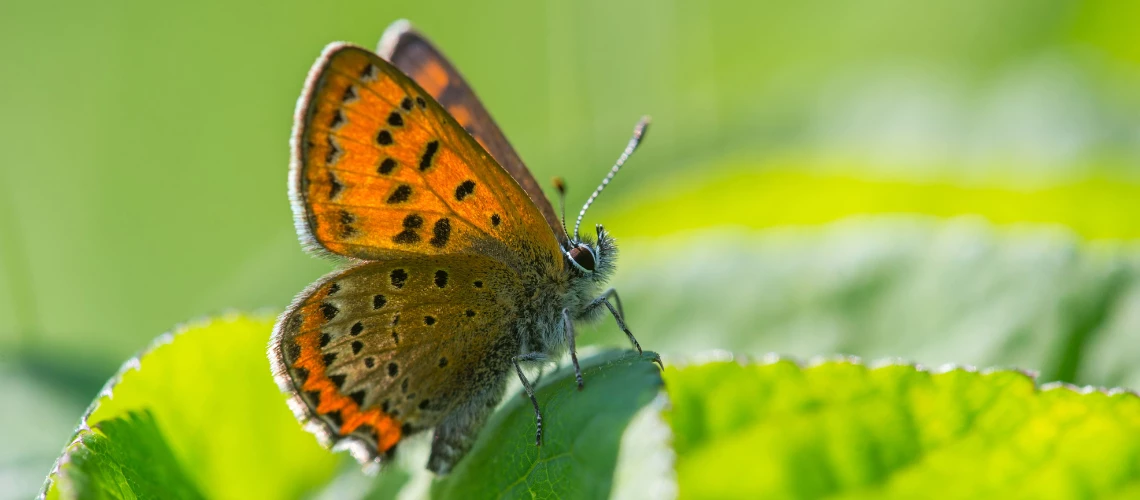 Violet Copper in the summer sun
Violet Copper in the summer sun
Large infrastructure projects are often transformational but can disturb ecosystems, agricultural livelihoods, and ancient ruins and artifacts if not carried out properly. This can lead to community tensions, project delays, and cost overruns.
The Trans Anatolian Natural Gas Pipeline Project (TANAP) case study documents and demonstrates how good environmental and social practices can contribute to positive environmental outcomes and increase benefits for people. TANAP construction began in 2015 and was completed in 2019 – on time and under budget, remarkable for a project of this size. Spanning 1,850 km across the entire length of Türkiye, TANAP, a World Bank financed project, has helped secure and diversify the European Union’s energy supply.
Critical to TANAP’s success was placing environmental and social issues at the core of the project, from planning to implementation. TANAP integrated environmental and social performance into the overall project design, which contributed to its development impact.
Here are some highlights of the project’s robust environmental, social, and risk management best practices.
Discovering New Flora and Fauna
At the outset of the project, TANAP hired ecologists to help identify all species along the pipeline route. During the construction and operation phase process, they discovered sixteen new species of flora and fauna, including dance flies, crane flies, butterflies, and several types of plants. At least two of these discoveries represented an entirely new genus in the Tipulidae family of insects and now bear the name of the World Bank-supported project—tanap cinar and tipula tanap.
The sheer number of species uncovered here shows how critical undertaking such efforts are to not only limiting projects’ environmental impact on local ecosystems, but also these discoveries have helped provide a clearer understanding of the country’s biodiversity—crucial for sectors of the economy such as agriculture and tourism.

Engaging Communities and Restoring Livelihoods
The TANAP team engaged with communities, workers, and other stakeholders to respond to their concerns and needs. For instance, they met early on with local fishermen affected by the pipeline construction, since TANAP crosses the Dardanelles Strait in western Türkiye. During the planning stage, the TANAP considered potential impacts of pipeline construction on the livelihoods of the local fishermen and arranged to compensate them for the number of days that their fishing vessels would not be able to go out to sea.
During construction, the TANAP team further realized that, while the fishing vessels could still go out to sea, they had to travel a longer distance to avoid the construction area. Calculating the loss of livelihoods for each household was challenging, but TANAP was able to adequately compensate each fishing vessel for the additional fuel expenses. The TANAP team subsequently monitored the livelihoods of these fishermen and found that households were able to maintain their income levels during the construction period.
This approach helped generate win-win scenarios for the project and local communities, reducing negative impacts on households.
Preserving Archeological Treasures
The area that is now modern Türkiye was once home to neolithic civilizations as well as the Hittite, Roman, Byzantine and Ottoman Empires. A large excavation guaranteed an encounter with ancient artifacts. The TANAP team hired archeologists to avoid routing the pipeline through known cultural and archeological sites, which helped construction contractors reduce the chances of finds and delays during construction.
Despite this, during construction, archeologists discovered over 1,000 artifacts, including a stunning find of materials dating from 4720 B.C. to 4553 B.C. at the Alaybeyi site. After a chance discovery, all work would stop until archaeologists and Turkish museum authorities arrived at the site to inspect, salvage, and preserve the artifacts.
This work, following international best practices, is helping preserve the country’s rich cultural history for future generations—one museum even opened a new exhibition hall dedicated to displaying the wealth of findings found through TANAP.

TANAP was committed to prioritizing the protection of local communities and livelihoods, the environment and the area’s cultural heritage despite a challenging and dynamic project environment. Efforts undertaken and lessons learned through TANAP demonstrate that when sound environmental and social performance is integrated into the overall project design and project management early on, large infrastructure projects have the potential to produce development spillovers that can further promote inclusive, resilient, and sustainable growth.



Join the Conversation